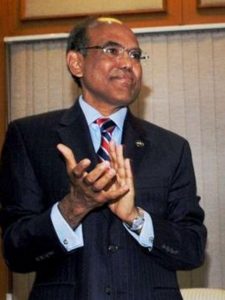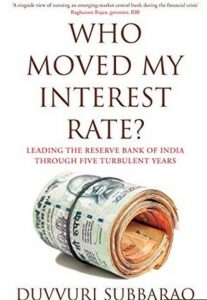
Who moved my interest rate amid chaos

Duvvuri Subbarao, was the boss India’s central bank Reserve Bank Of India, for 11 days when Lehman Brothers collapsed, plunging into the biggest financial crisis in decades. His turbulent relationships with two Finance Ministers of India at that time P. Chidambaram and Pranab Mukherjee, and give his account that may cause considerable embarrassment. Chidambaram in October 2008clearly overstepped into RBI turf, as his decision to constitute a liquidity management Committee headed by finance secretary Arun Ramanathan with out consulting, Subbarao, as liquidity management is a quintessential central bank function.
Mr Subbarao cited an example of the June 2013 policy review, when the former Finance Minister wanted him to cut the cash reserve ratio – the proportion of cash banks need to set aside with RBI. However, Mr. Subbarao did not oblige since the Rupee was under pressure due to the “Taper tantrum”, when the rupee had lost nearly 25 per cent. “The government in particular, was attempting to paint rupee problem as caused entirely by external factors, but global factors were just the proximate cause of our exchange rate turmoil: the root cause lay in our domestic economy where, for years, we have been heaping pressure on the rupee, an issue that the Reserve Bank consistently raised in its monetary policy statements. An implosion was inevitable, it was incidental that the trigger came by way of the tape tantrums” Mr Subbarao laments.
However, Mr Subbarao spent the next five years battling to shield India’s economy from a surge in global market volatility.
His detailed insider’s account of the international fight to restore stability in the years after the Lehman collapse, and of the impact of rich-world economic policies on emerging markets especially India. The 2008 crisis prompted inclusion of emerging nations in the Basel Committee on Banking supervision and the prominence of G20 as critical forum for co-ordination among leading nations. Although emerging nations were given a seat at the table, there was no real inclusion writes Subbarao “ Typically advanced economies would stitch up a deal at a conclave ahead of the meeting and present that at the formal meeting for approval, almost as a fait Accompli”. Even as India and other developing countries work to implement the new Basel III standards for bank capital, those rules would hurt their growth by restricting credit –warnings that “failed to influence the final … decision in any significant way”. His book also raises questions about dollar’s role as the pre-eminent global reserve currency, highlighting the widespread shortage of the currency in the post Lehman turmoil, when investors lineup to the safe haven of US assests. India’s problem was intensified when the US Federal Reserve refused the RBI’s request for a bilateral swap arrangement- since the India’s financial markets were “not important from the US perspective”, Subbarao writes. He was the most active Indian rate-setter to history with 13 rate rises and 10 cuts in five years.
Who Moved My Interest Rate? Leading the Reserve Bank of India Through Five Turbulent Years by Duvvuri Subbarao, Penguin, India £16.99 ebook, Rs.699, 400 pages.

